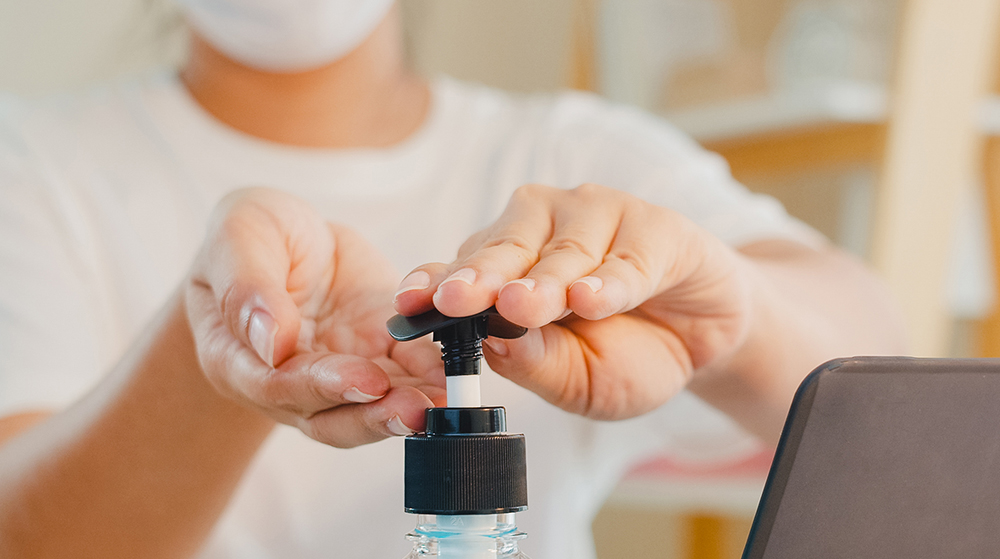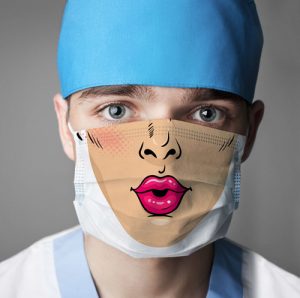
As the world tries to deal with the corona pandemic, we are reminded of how much the little things matter: sitting at a café for a drink, going to the gym, sharing a laugh with friends… but also, how it could all have been avoided with basic cleanliness!
So while we wait on lockdown in our homes, why not have a look at some skin conditions that can, like the corona virus, be easily transmitted through contact.
Here are 5 contagious skin diseases that may affect our face and body.

Warts
Warts are usually a flesh-colored hard bump with black dots that looks like a skin tag.
They can also be a cluster on the bottom of the feet that looks like calluses, or flat lesions so tiny that they may be invisible to the naked eye.
Warts are caused by the famous HPV human papillomavirus. HPV can cause cervical cancer, warts that occur on the hands/feet, as well as genital warts, and unfortunately it has no easy cure. The good news is that warts are benign, and they are not cancerous. They are however very contagious and spread by contact with the wart or anything it has touched. So be extra careful if you’re a person who bites their nails, if you shake a lot of hands, and of course if you have a lot of personal human contact with strangers.
Because your recovery will require the help of your immune system, you must be extra diligent with your treatment. It’s always recommended to start with a visit to your dermatologist who can recommend you a home treatment. In-office treatments include liquid nitrogen, surgical removal, or immune stimulating creams.
Scabies
If you feel an unrelenting itch and you have a rash, look closely. Scabies is made of little bumps that can resemble bites, concentrated on the wrists, belt line, genitals, and nipples.
Scabies is a contagious and intensely itchy rash caused by a tiny, burrowing mite. The eight-legged bug is so small that it is not visible to the naked eye. It lives in and feeds on the top layer of skin. The contagion is mostly the result of direct skin-to-skin contact, and it can happen as quickly as an accidental bump into an infected stranger.
Germaphobes: be careful and watch for other sources of infestation such as bedding, clothes, and even furniture. The scabies mite can live up to three days without human contact. Anyone and everyone can get it. (Get cleaning NOW.)
You dermatologist will take some of your skin and check under a microscope to see the bug and confirm your diagnosis. Then the treatment will be an anti-mite lotion to be applied all over your body. All household contacts and recent sexual partners should be treated as well. Your clothes and sheets should be washed in hot water and dried in high heat.

Herpes Simplex
The herpes simplex virus is known as a typical cold sore. A tingling or burning sensation may precede the painful outbreak which looks like clustered blisters that sit on a pink or red inflamed base. In the genital area, one may notice lymph nodes or even pain with urination in addition to the sores. In severe cases, flu-like symptoms can complicate the picture.
This is generally categorized into two types: HSV-1 and HSV-2.
HSV-1 is usually spread from oral-to-oral contact, while HSV-2 is more often a result of sexual contact. Here’s the catch: once you’re infected, it never goes away and you live with it all your life. You can also transmit it when there is no active lesion, this is known as asymptomatic viral shedding.
Your dermatologist will prescribe an oral antiviral medication, and of course you must always be safe to prevent further spread.

Impetigo
These red sores on the face, on hands and feet, burst and develop into honey colored crusts. Anything that looks like a yellow crust is impetigo until proven otherwise. Your doctor may do a culture to confirm the infection.
Impetigo is a very highly contagious skin infection caused most commonly by the bacteria Staphylococcus aureus. The honey-colored crusts are common in children, but also in athletes who engage in contact sports. It can also be passed along through kissing a partner who has coarse facial hair, because guess what: bacteria love beards.
Bacteria can also spread when we scratch a patch of dry or inflamed.
It will clear out with a topical or oral antibiotic for a week to 10 days.
Molluscum contagiosum
MC is clear to see: upturned, round, flesh-colored small bumps, with a central dell. They can be itchy, inflamed, and easily removed by scratching or rubbing, but this also makes the virus spread like wildfire, so be very careful and don’t poke at them.
This is a virus most commonly seen in children, but it can definitely occur in adults as well. MC involving the genitals generally results from skin to skin contact. The bumps are super contagious, hence the name. Now to panic: towels and any other wet surface area are a breeding ground for MC.
The good news is that MC infections are completely harmless. Eventually, between three and six months, the immune system will get rid of the virus naturally. To help you with recovery, your dermatologist may use liquid nitrogen or immune-stimulating creams.

So how about we try to avoid these contagions at all times? Can we agree that it all comes down to hygiene? Keep your hands clean, keep your personal space clean, and keep your clothes clean. We all have a moral duty to keep ourselves and our society clean. Stay safe out there!